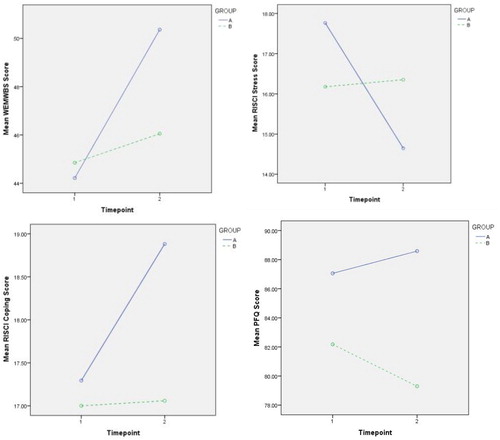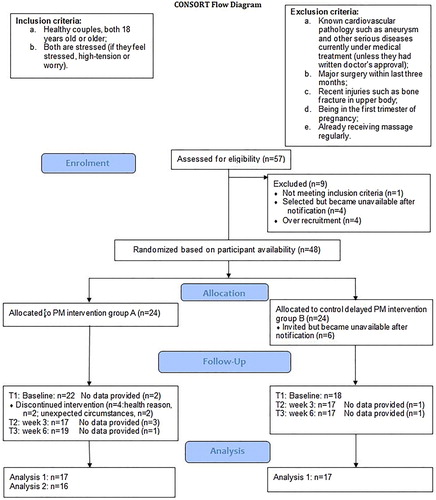Figures & data
Table 1. Demographic Data between Group A and B.
Figure 3. Interaction Effect between Group and Time-point on the WEMWBS Score, the RISCI Stress and Coping Score, and the PFQ Score (N = 34; group A, n = 17; group B, n = 17). WEMWBS = Warwick-Edinburgh Mental Well-being Scale (Between 14 and 70: 70 = most positive), RISCI Stress = Rhode Island Stress and Coping Inventory Stress subscale (Between 5 and 25: 25 = greatest perceived stress), RISCI Coping = RISCH Coping subscale (Between 5 and 25: 25 = greatest coping ability), PFQ = Positive Feelings Questionnaire (Between 14 and 98: 98 = highest relationship satisfaction).

Figure 4. Effect of the PM Programme on the WEMWBS Score, the RISCI Stress and Coping Score, and the PFQ Score at 3 Time-points (T1, T2 &T3) (N = 16). **p < .01 n.s.=not significant.



